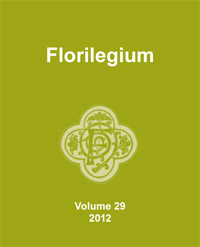Résolution numérique d'un problème métrologique : Le pied, la perche et l'acre d'Angleterre
Abstract
What exactly is an English acre? Why does the perch or rod contain 16 and a half feet? Where does this particular foot come from? This paper tries to answer these questions, linking them to a restored European ancient field-measuring system based on calculations. This entirely new working hypothesis assumes that the British measures follow rules originating in Rome, introduced through the scientific and administrative culture of the Carolingian era and the later imperial culture of the Middle Ages.
Résumé
Qu'est-ce exactement qu'une acre d'Angleterre ? Pourquoi la perche contient-elle 16 pieds et demi ? D'où ce pied particulier provient-il ? Le présent article tente de répondre à ces questions, en les reliant à la restitution d'un ancien système d'arpentage européen fondé sur le calcul. L'hypothèse de départ, tout à fait nouvelle, implique que les mesures britanniques obéissent à des règles émanant de Rome, au travers de la culture scientifique et administrative carolingienne, puis impériale.



